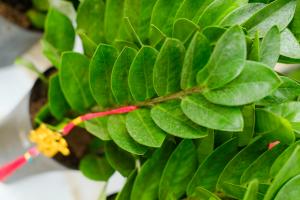Introduction
Plant life is not only limited to land but also extends to the water. Underwater plants have adapted to living in aquatic environments and have unique features that allow them to thrive in water.
How do plants breathe underwater?
Just like land plants, underwater plants also undergo photosynthesis to produce oxygen. They have a unique way of breathing underwater as their leaves and stems are filled with tiny air pockets or air spaces called aerenchyma. These air spaces enable plants to uptake carbon dioxide and release oxygen into the surrounding water.
Types of underwater plants
There are different types of underwater plants. The main types include:
Algae - These are the most common type of underwater plants. They are simple, non-flowering plants that come in varied colors and sizes.
Emergent plants - These are rooted plants that grow in shallow waters. They have both underwater and above-water leaves.
Submerged plants - These are rooted plants that grow in deep waters. They have leaves that grow underwater only.
Free-floating plants - These are plants that do not have roots and instead float freely on the water's surface.
Adaptations of underwater plants
Underwater plants have made various adaptations to suit their environment. Some of the adaptations include:
Flexible leaves and stems - Underwater plants have flexible stems and leaves that sway from side to side as they are influenced by water movements. This adaptation helps them to withstand strong water currents and reduce the effects of water turbulence.
Leaves with smooth surfaces - Most underwater plant leaves are thin and smooth to reduce resistance from water currents. This adaptation helps the plant to absorb sunlight and carbon dioxide easily.
Reduced roots - Submerged plants have reduced roots since they do not need to anchor themselves into the soil. The reduced root structure helps the plant to maximize its ability to absorb nutrients from the water.
Aerenchyma - This feature allows underwater plants to breathe by transporting oxygen to every part of their body.
Roles of underwater plants
Underwater plants play a crucial role in aquatic ecosystems. They provide several benefits including:
Producing oxygen - Just like land plants, underwater plants produce oxygen through photosynthesis. This process provides oxygen to the surrounding water and keeps the water balanced and healthy for aquatic life.
Filtering water - Underwater plants act as natural filters by consuming nutrients from the water, thus helping to reduce algae growth and excess nutrients.
Providing habitat - Underwater plants provide habitats for aquatic animals and other plants. They also provide cover for young fish and invertebrates.
Preventing soil erosion - Rooted underwater plants help to anchor the soil and prevent it from being washed away by water currents.
Conclusion
Underwater plants have unique adaptations that have enabled them to survive and thrive in aquatic environments. They play a vital role in maintaining the balance of aquatic ecosystems and are essential for the survival of aquatic life.

 how many times do yo...
how many times do yo... how many planted tre...
how many planted tre... how many pine trees ...
how many pine trees ... how many pecan trees...
how many pecan trees... how many plants comp...
how many plants comp... how many plants can ...
how many plants can ... how many plants and ...
how many plants and ... how many pepper plan...
how many pepper plan...

































